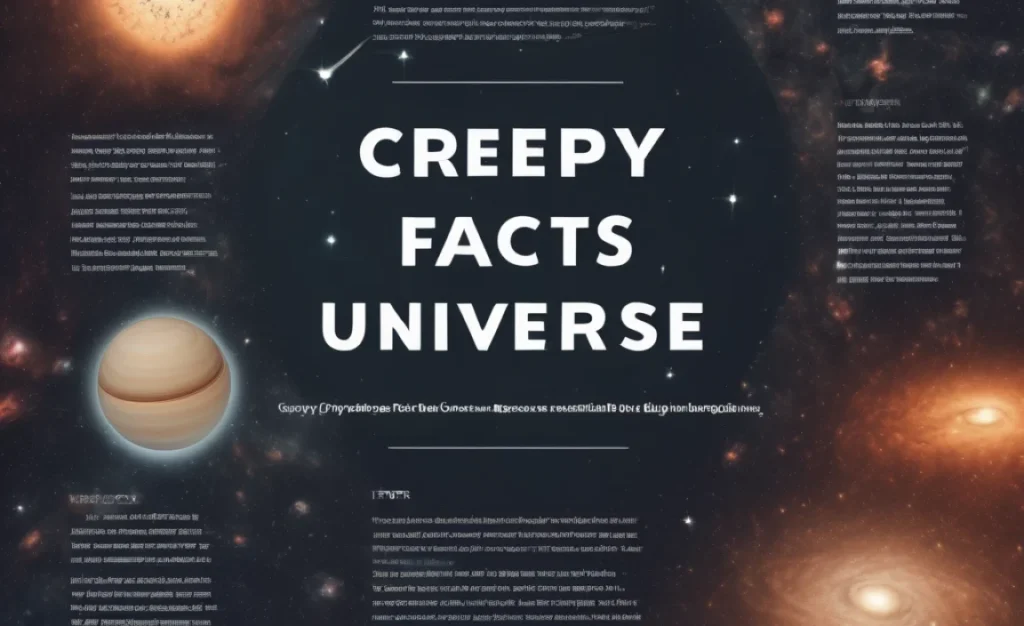Have you ever stared at the night sky and felt a chill? The universe is full of mysteries. Some of these mysteries can be quite creepy. Imagine a place where stars vanish or black holes gobble up light. Let’s explore some creepy facts about the universe. These facts will make you wonder about the world beyond us.
Key Takeaways
- The universe is vast and full of scary mysteries.
- Black holes can swallow stars and even light.
- Galaxies might collide in the distant future.
- Creepy facts about the universe include strange cosmic sounds.
- There are planets made entirely of ice or fire.
The Creepy World of Black Holes
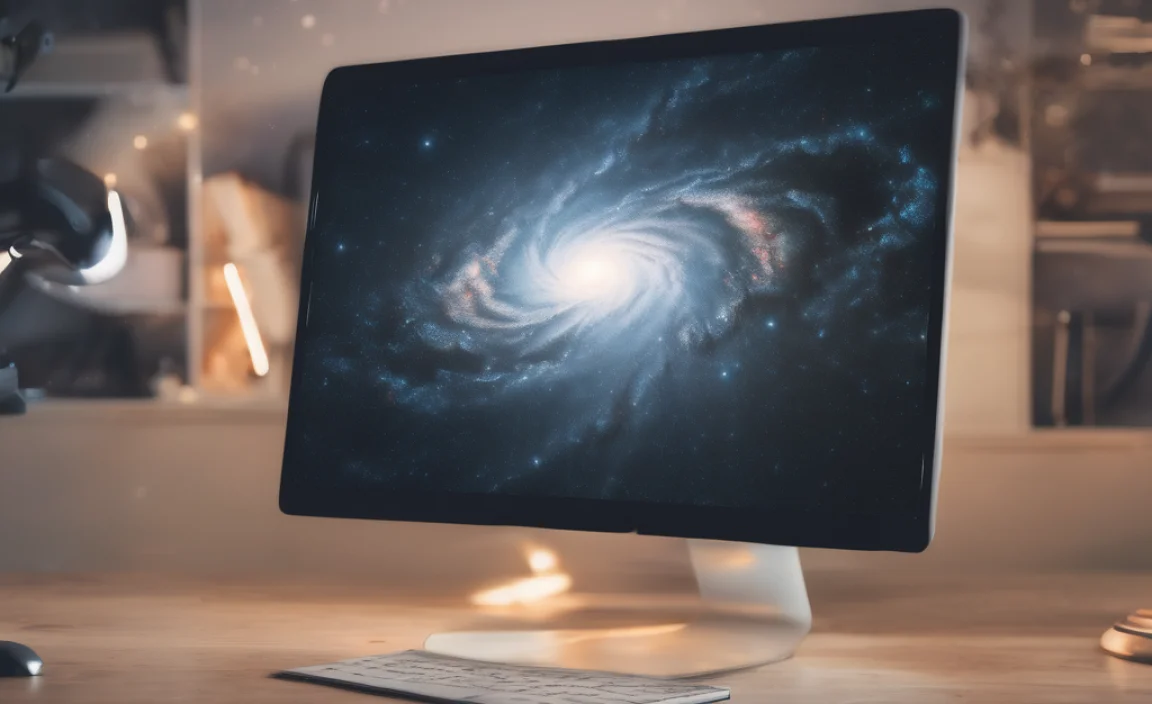
Black holes are like cosmic vacuums. They pull in everything around them. Not even light can escape a black hole’s pull. This makes them invisible and mysterious. Black holes form when massive stars collapse. Their gravity is so strong, they warp time and space. This makes them one of the most fascinating and creepy facts about the universe. Many galaxies have supermassive black holes at their centers. These black holes can be billions of times heavier than our sun. They can even merge, creating a colossal black hole. As they merge, they send out ripples through space, called gravitational waves.
- Black holes can consume entire stars.
- They warp time around them.
- Gravitational waves signal black hole mergers.
- Invisible to the naked eye.
- Form from collapsing stars.
- Supermassive black holes exist in galaxies.
- Black holes can merge together.
Scientists study black holes to understand gravity better. They use powerful telescopes and math. One famous black hole is in the center of our galaxy. It’s called Sagittarius A*. It’s 4 million times the mass of our sun. Despite being far away, it helps us learn about physics. Black holes remind us of the universe’s strange and powerful forces.
Fun Fact or Stats : The first black hole photo was taken in 2019!
What Happens Inside A Black Hole?
Imagine stepping into a room with no exit. That’s what being inside a black hole might feel like. But what really happens inside? No one knows for sure. It’s a place where physics breaks down. Some scientists think you’d be stretched like spaghetti. Others think you’d end up in another part of the universe. These ideas make black holes incredibly intriguing. Would you dare to explore one?
The Mystery of Gravitational Waves
Gravitational waves are like ripples in a pond. They travel through space when massive objects move. When two black holes merge, they send out gravitational waves. These waves tell us about events in space. Imagine two marbles swirling in a bowl. Now imagine they’re so heavy, they bend the bowl. That’s what black holes do to space! Scientists use special tools to detect these waves. It’s like listening to the universe’s heartbeat.
Why Do Black Holes Form?
Why do some stars turn into black holes? Stars are like giant nuclear reactors. They burn fuel and create energy. But what happens when the fuel runs out? The star collapses under its own weight. If it’s big enough, it becomes a black hole. This collapse is so powerful, it can cause a supernova. Imagine a cosmic explosion creating a black hole! It’s both terrifying and fascinating.
Strange Cosmic Sounds
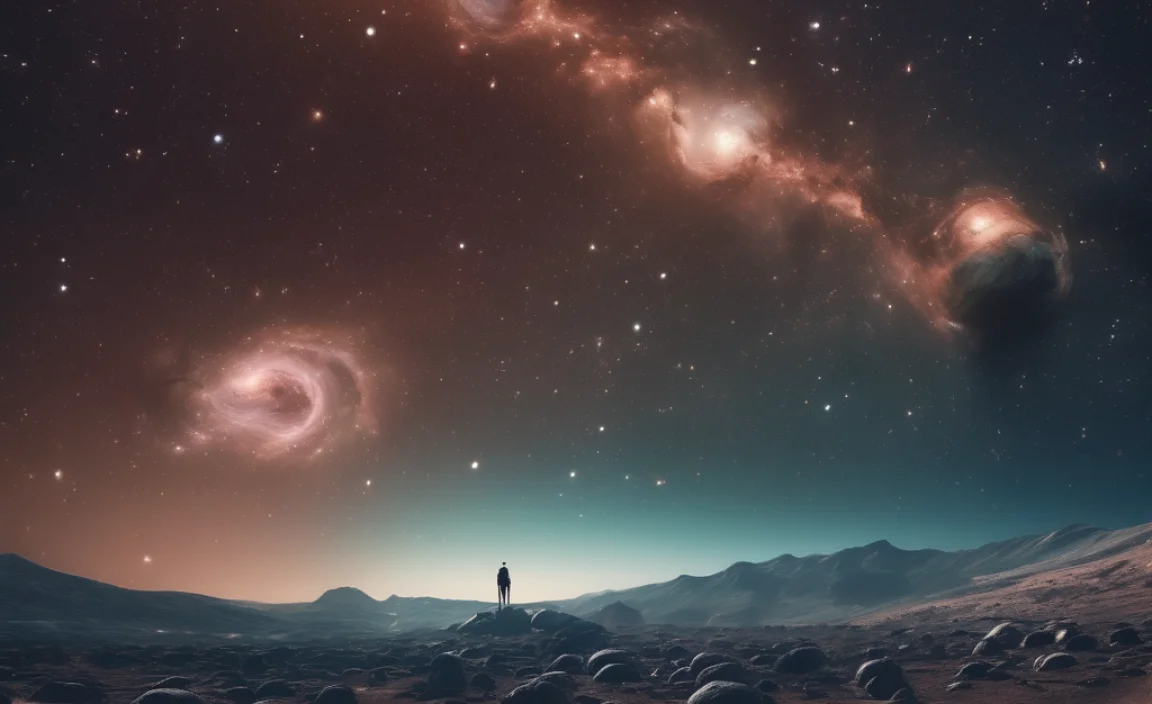
Did you know space makes sounds? We can’t hear them with our ears. But scientists have special tools. These tools pick up vibrations in space. One creepy fact is that space hums. This hum is caused by stars and galaxies moving. It’s a sound that never stops. Another strange sound is from pulsars. Pulsars are spinning neutron stars. They send out beams of light like a lighthouse. These beams create rhythmic ticking sounds in space. The universe has its own music, and it’s quite eerie.
- Space has a constant hum.
- Pulsars create ticking sounds.
- Vibrations travel through space.
- Galaxies and stars create cosmic music.
- Space sounds are detected with special tools.
- These sounds are creepy and fascinating.
- We cannot hear them with our ears.
Scientists study these sounds to learn more about the universe. They use data from telescopes and satellites. The sounds help us understand how stars and galaxies behave. Even though we can’t hear them, cosmic sounds tell us a lot. They remind us that the universe is a mysterious and active place.
Fun Fact or Stats : The Voyager spacecraft recorded strange space sounds in the 1970s!
What Are Pulsars?
Have you heard of pulsars? They’re like cosmic lighthouses. Pulsars are neutron stars that spin very fast. They send out beams of radiation. When these beams sweep past Earth, we see flashes of light. Imagine a flashlight spinning in the dark. That’s how a pulsar works. Some pulsars spin 700 times per second! They’re one of the universe’s most fascinating mysteries.
Do Galaxies Make Noise?
Galaxies are like giant cities in space. They’re full of stars, planets, and cosmic dust. But do they make a sound? Galaxies move and vibrate. When they collide, they create gravitational waves. These waves are like whispers from space. Imagine two enormous whirlpools merging. They create ripples in water, just like galaxies do in space. Each galaxy has its own unique “song.”
How Do We Hear Space?
Space is a silent place. There’s no air for sound to travel through. So how do we hear it? Scientists use radio telescopes. These telescopes pick up vibrations and convert them to sound. Think of it like turning a silent movie into a talkie. This way, we can “hear” what happens in space. It’s like listening to the secrets of the universe.
Planetary Oddities: Strange Worlds
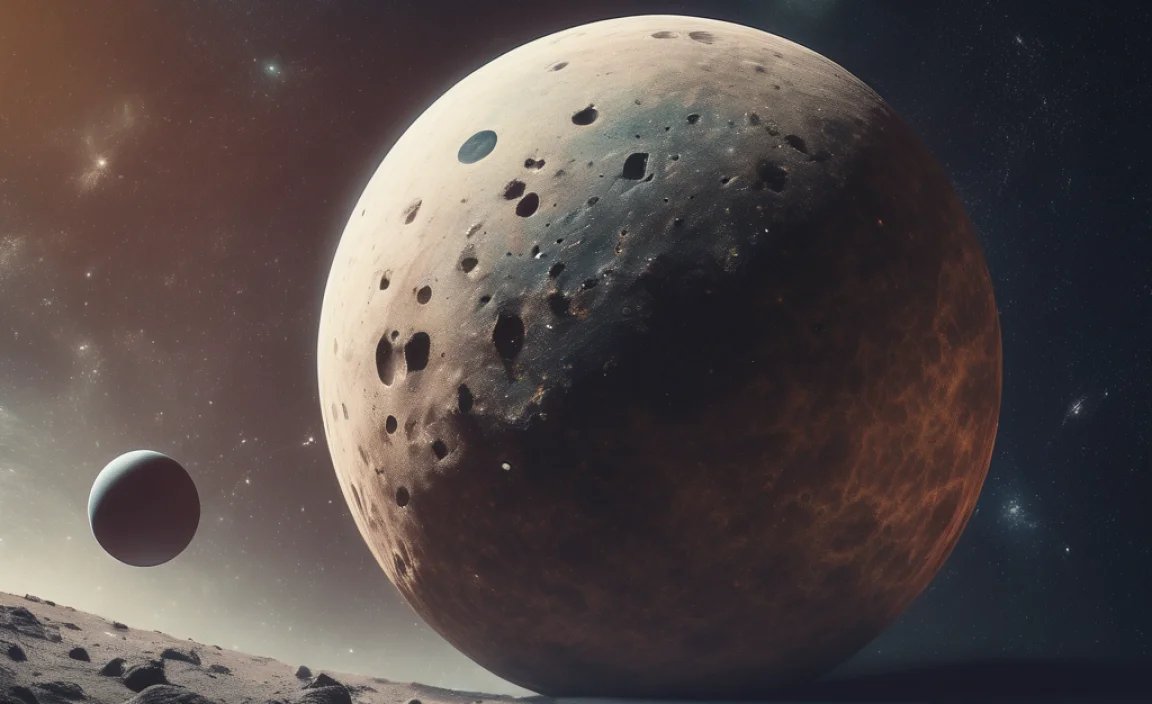
Our solar system has its own planets. But did you know there are more planets out there? These are called exoplanets. Some of them are truly bizarre! For example, some planets rain glass. Others are covered in lava or ice. Scientists have discovered a planet made of diamond. There’s even a planet where it rains rocks. These are some creepy facts about the universe that make us wonder.
- Exoplanets are planets outside our solar system.
- Some exoplanets rain glass sideways.
- Others are covered in lava or ice.
- Diamond planets exist in the universe.
- Some planets have rock rains.
- These planets are very far away.
- They show how strange space can be.
Exoplanets are studied by observing stars. When a planet passes in front of a star, it dims the light. This helps scientists find new planets. The variety of exoplanets is amazing. Each one has different features and mysteries. Understanding them can teach us more about our own planet. These strange worlds show how diverse and surprising the universe is.
Fun Fact or Stats : Over 4,000 exoplanets have been discovered so far!
What Is An Exoplanet?
Have you ever wondered if there are planets outside our solar system? Exoplanets are planets that orbit other stars. They can be very different from Earth. Some are giant gas planets like Jupiter. Others are rocky like Mars. Scientists use telescopes to find exoplanets. They study them to learn more about the universe. Could there be another Earth out there?
How Do Planets Rain Glass?
Imagine a planet where the wind blows glass sideways. That’s what happens on some exoplanets. These planets have extreme weather. The heat and pressure create molten glass. Strong winds then blow it around. It’s like a never-ending glass storm! These planets are dangerous but fascinating. They remind us of the universe’s power and beauty.
Why Are Diamond Planets Special?
Imagine a planet made entirely of diamond. Sounds like a dream, right? Scientists have found such a planet! It’s called 55 Cancri e. It’s twice the size of Earth and very hot. The carbon on the planet has turned into diamond. This makes it one of the most valuable planets. It shows how diverse and unexpected space can be.
Galactic Collisions: A Cosmic Dance
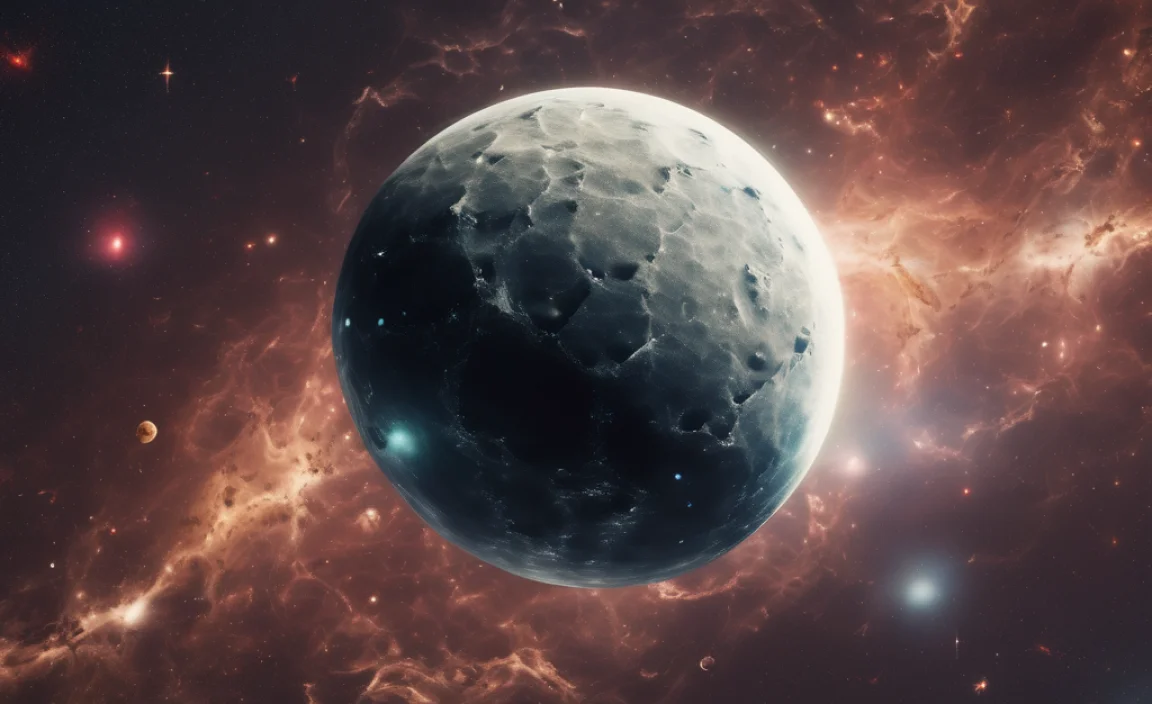
Galaxies are massive collections of stars and planets. They move through space like cosmic dancers. Sometimes, galaxies collide. This is one of the most dramatic and creepy facts about the universe. When galaxies collide, stars and planets get shuffled around. Imagine two giant swarms of bees merging. That’s what happens when galaxies collide. It’s a slow process, taking millions of years.
- Galaxies can collide in space.
- Stars and planets get mixed up.
- Collisions take millions of years.
- They create new star formations.
- Galactic collisions are like cosmic dances.
- Our galaxy may collide with Andromeda.
- Collisions can form new galaxies.
These collisions can create new stars. Some stars might get thrown out into space. Scientists study these events to understand galaxy formation. Our own Milky Way is on a collision course. In a few billion years, it will collide with the Andromeda galaxy. This cosmic dance tells us about the life and death of galaxies.
Fun Fact or Stats : The Milky Way and Andromeda are moving towards each other at 250,000 miles per hour!
What Happens When Galaxies Collide?
Imagine two giant whirlpools in the ocean. When they meet, they create chaos. That’s similar to galaxies colliding. Stars and planets from both galaxies get mixed. Some stars might even get ejected into space. But don’t worry, these collisions take millions of years! It’s a slow and beautiful cosmic event.
How Do Galaxies Form?
Galaxies are born from clouds of gas and dust. Gravity pulls this material together. Over time, stars begin to form. These stars group together, forming galaxies. Some galaxies are spiral-shaped, like the Milky Way. Others are elliptical or irregular. Each galaxy is unique and tells a different story.
Is Our Galaxy Safe?
Our galaxy, the Milky Way, is part of the universe’s grand dance. It’s moving through space and interacting with other galaxies. In billions of years, it will merge with the Andromeda galaxy. But don’t worry, stars are so far apart, very few will collide. It’s a cosmic event we can only imagine.
The Mystery Of Dark Matter
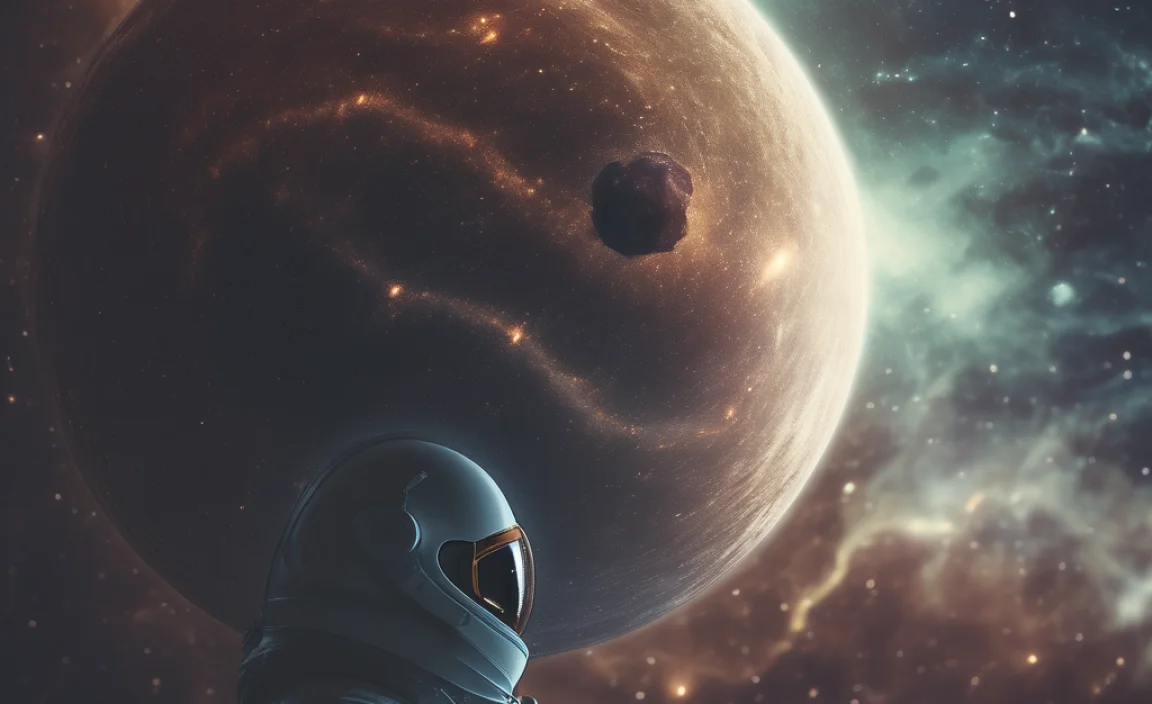
Dark matter is one of the universe’s greatest mysteries. It doesn’t emit light or energy. We can’t see it. But it makes up most of the universe’s mass. Scientists know it’s there because it affects gravity. Imagine a ghost pushing a swing. You can’t see the ghost, but the swing moves. Dark matter works in a similar way. It holds galaxies together. It’s one of the most intriguing and creepy facts about the universe.
- Dark matter is invisible.
- It doesn’t emit light or energy.
- It makes up most of the universe’s mass.
- Dark matter affects gravity.
- It holds galaxies together.
- Scientists can’t see dark matter directly.
- It’s one of the universe’s biggest mysteries.
Researchers use special tools to study dark matter. They look at how galaxies behave. Dark matter is crucial for understanding the universe. It’s like a hidden web that connects galaxies. Without it, galaxies would fall apart. The study of dark matter is like solving a cosmic puzzle. It reveals the unseen forces shaping our universe.
Fun Fact or Stats : Dark matter makes up about 27% of the universe!
What Is Dark Matter?
Dark matter is like a ghost that haunts the universe. It doesn’t shine like stars or glow like planets. We can’t see it, but we know it’s there. Dark matter pulls on galaxies and stars with its gravity. It’s like an invisible hand guiding them. Scientists study dark matter to unlock its secrets.
How Does Dark Matter Affect Us?
Dark matter is everywhere, even though we can’t see it. It holds galaxies together, including ours. Without dark matter, galaxies would drift apart. The universe would look very different. Scientists use telescopes to study its effects. They hope to learn more about this mysterious substance. It’s like finding clues to a cosmic mystery.
Can We Detect Dark Matter?
Detecting dark matter is like finding a needle in a haystack. Scientists use special detectors deep underground. These detectors look for tiny particles that might be dark matter. It’s a challenging task, but scientists are hopeful. Every clue brings us closer to understanding this mysterious force. It’s like piecing together a giant cosmic puzzle.
Conclusion
The universe is full of wonders and mysteries. From black holes to dark matter, there’s always something new to learn. These creepy facts about the universe remind us of its vastness. They also show the incredible forces at work beyond our planet. As we continue to explore, who knows what other mysteries we’ll uncover?
FAQs
Question: What are creepy facts about the universe?
Answer: Creepy facts about the universe include black holes, dark matter, and strange planets. These mysteries keep scientists exploring. They remind us how vast and unknown space is.
Question: What happens when galaxies collide?
Answer: When galaxies collide, stars and planets mix. The process takes millions of years. New stars may form, and galaxies can merge. It’s like a cosmic dance in space.
Question: Can we hear sounds in space?
Answer: Space is silent, but we can detect vibrations. Scientists use special tools to convert these into sounds. These cosmic sounds reveal more about the universe.
Question: What makes black holes creepy?
Answer: Black holes have intense gravity that swallows everything, even light. Their mysterious nature makes them one of the creepy facts about the universe.
Question: How is dark matter different from visible matter?
Answer: Dark matter doesn’t emit light or energy. We can’t see it directly. It makes up most of the universe’s mass and affects gravity. Visible matter, like stars and planets, can be seen and measured.
Question: Are there planets made of diamonds?
Answer: Yes, there are planets made of diamond! One such planet is 55 Cancri e. Its carbon has turned to diamond, showing the universe’s diversity.


